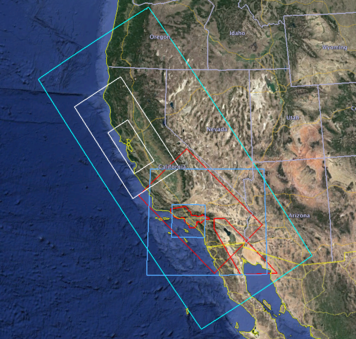Difference between revisions of "UCVMC"
| Line 4: | Line 4: | ||
== Software Installation and Usage == | == Software Installation and Usage == | ||
| − | *[[ | + | *[[UCVM_Introduction]] |
| − | *[[ | + | *[[UCVM_System_Requirements]] |
*[[UCVM_Installation]] | *[[UCVM_Installation]] | ||
| − | *[[ | + | *[[UCVM_Basic_Usage]] |
*[[UCVM_Advanced_Features]] | *[[UCVM_Advanced_Features]] | ||
*[[UCVM_Tests]] | *[[UCVM_Tests]] | ||
| Line 83: | Line 83: | ||
To avoid this, set the config var: push.default: | To avoid this, set the config var: push.default: | ||
git config push.default current | git config push.default current | ||
| + | |||
| + | == Confirming UCVM Installation == | ||
| + | *Run make check | ||
| + | *Run unit tests | ||
| + | *Run acceptance tests | ||
== Related Entries == | == Related Entries == | ||
Revision as of 00:42, 14 December 2016
The Unified Community Velocity Model (UCVM) software framework is a collection of software tools designed to provide standard interface to multiple, alternative, California 3D velocity models. One important use of UCVM is in high resolution 3D wave propagation simulations for California. UCVM development is an interdisciplinary research collaboration involving geoscientists and computer scientists. UCVM geoscience research includes identification and assembly of existing California velocity models into a state-wide model and improvements to existing velocity models. UCVM computer science research includes definition of a easy-to-use CVM query interface, integration of regional 3D and geotechnical models, and automated CVM evaluation processing capabilities.
Contents
Software Installation and Usage
- UCVM_Introduction
- UCVM_System_Requirements
- UCVM_Installation
- UCVM_Basic_Usage
- UCVM_Advanced_Features
- UCVM_Tests
- UCVM_Model_Reference
- UCVM_Command_Reference
UCVM_Introduction
The Unified Community Velocity Model (UCVM) software is open-source scientific software designed to support earth scientists, civil engineers, and other groups interested in detailed information about earth properties. UCVM is primarily used by scientists to work with earth material properties on regional scales.
UCVM software provides a software interface to one or more existing earth structure models. The earth structure models can be used directly without requiring UCVM. While UCVM adds complexity, it provides software capabilities that may be valuable to researchers. These UCVM specific capabilities include:
- Provides standard query interface to multiple CVM models with different projections.
- Converts query by elevation to query by depth to create comparable models.
- Provides standard methods for tri-linear interpolation, Vs30, and basin query from models.
- Provides plotting and analysis tools that make vertical profile, horizontal, and cross section plots.
- Provides tools to add gtl and ssh into models.
- Supports tiling of models and background models.
- Make AWP and ETree format meshes including parallel extractions.
UCVM_System_Requirements
Reference computing environment is the USC HPC system.
- Centos 5.6
- gnu C, gfortran 4.5
- Python 2.7
- Anaconda Python packages
- Git client
- vi or emacs
Parallel UCVM Build Adds:
- MPI
- MPICH
UCVM_Installation
UCVM installation does not require root access. It does require approximately 5G disk space for all the models to be installed.
The UCVM installation establishes two directory tree, the source tree, and the bin tree. The source tree is used during the installation process, but the bin directory is where the software is installed for use. Then the source tree can be removed. The UCVM install script will prompt you to enter a bin directory, and it will offer a default installation in the login directory/ucvm-v15.10.0
- Log into Linux system.
- Create a source tree directory (/user/maechlin/ucvm_src)
- clone the sceccode/UCVM directory. On hpc system, add usc github remote and retrieve the paper branch of ucvm.
$ git remote origin $ git remote add pb https://github.com/paulboone/ticgit $ git remote -v
commit changes with $ git push origin master
shor remotes $ git remote show origin * remote origin
$ git clone https://github.com/lukeredpath/LRResty.git $ cd LRResty Check what branch you are using at this point (it should be the master branch): $ git branch * master Check out the branch you want, in my case it is called 'arcified':
$ git checkout -b arcified origin/arcified Branch arcified set up to track remote branch arcified from origin. Switched to a new branch 'arcified' Confirm you are now using the branch you wanted:
$ git branch * arcified master If you want to update the code again later, run git pull:
$ git pull Already up-to-date.
you must take care only to push the branch that you want to push - git push can be configured to push all your branches. To avoid this, set the config var: push.default: git config push.default current
Confirming UCVM Installation
- Run make check
- Run unit tests
- Run acceptance tests
